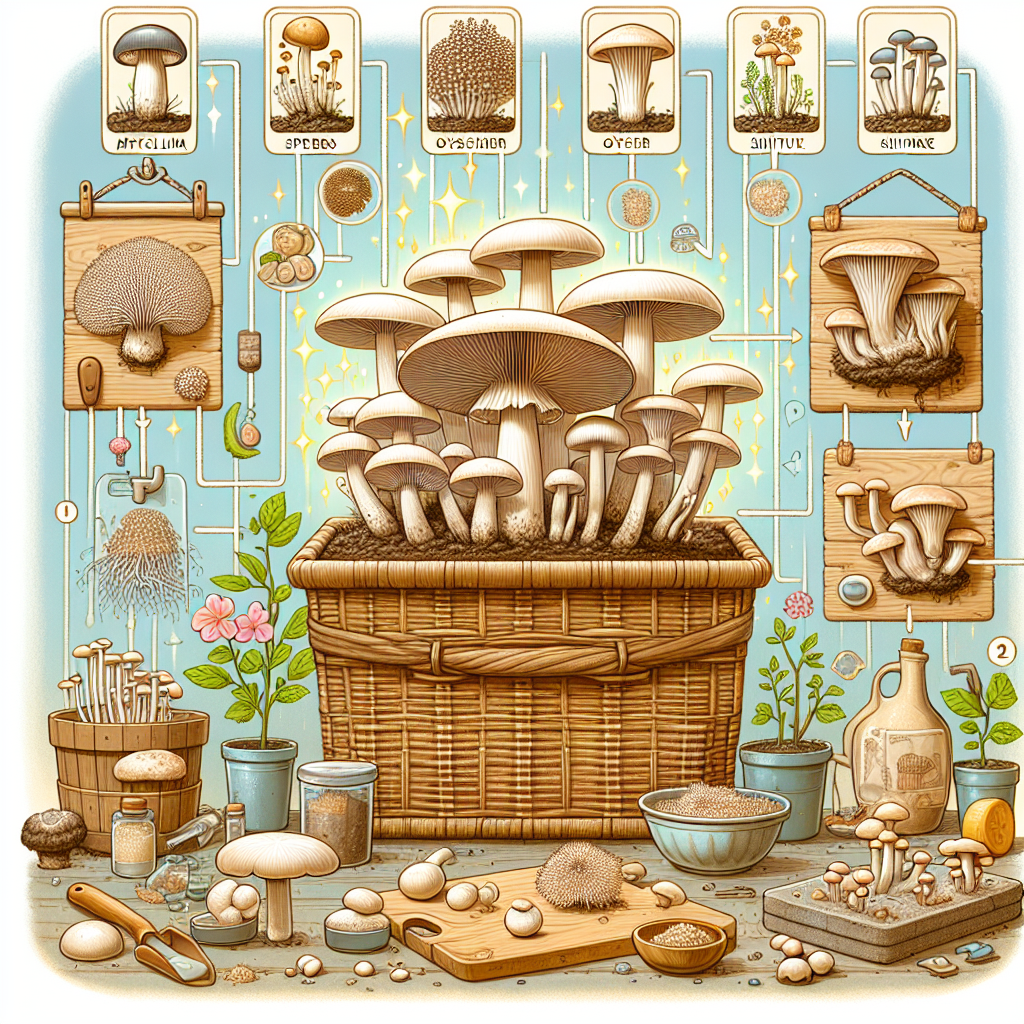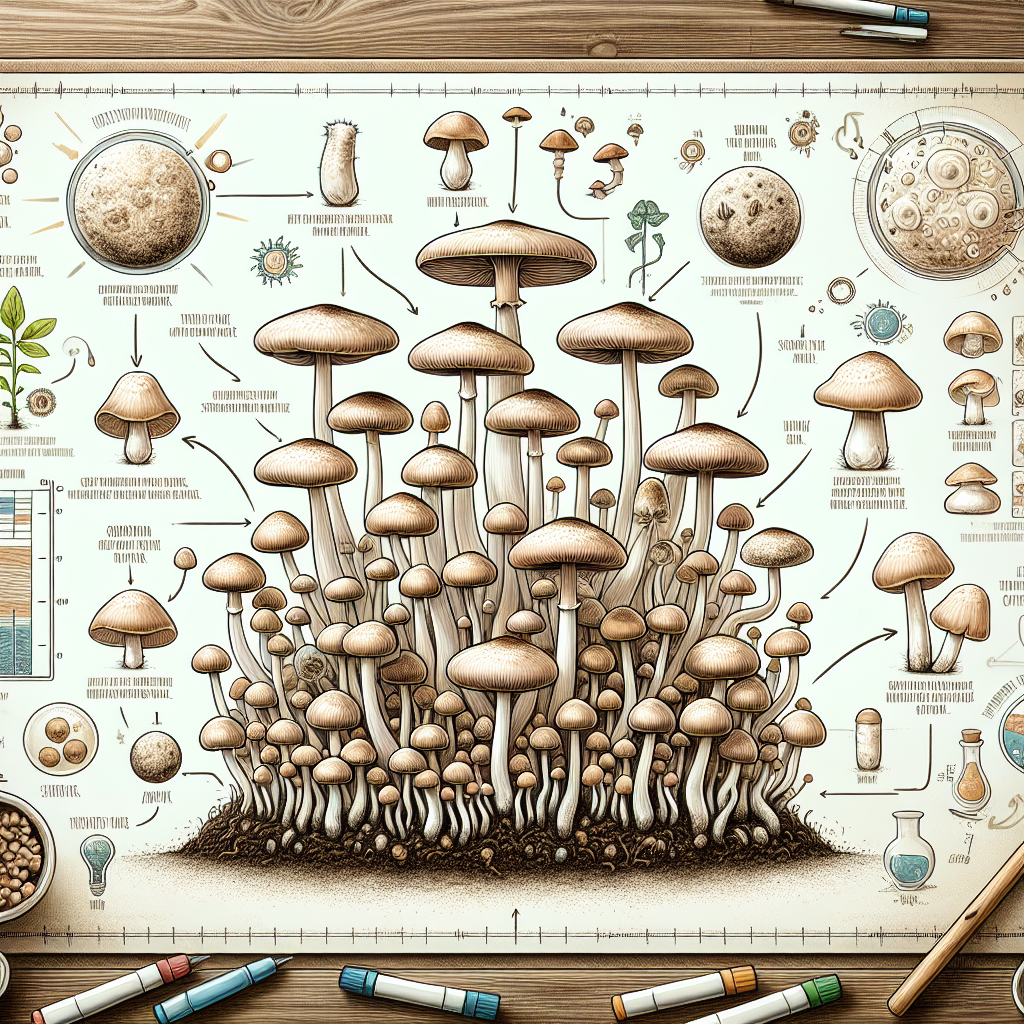Unleashing the Magic: Tips for Growing Mushrooms at Home
Mushrooms have long been revered for their unique taste and nutritional value. They add depth and flavor to a wide variety of dishes, from stir-fries to sauces, and have even been hailed as a health-promoting superfood. While it may seem mysterious and complex, growing mushrooms at home can be a rewarding and magical experience. In this article, we will explore the fascinating world of mushroom cultivation and provide you with tips to successfully grow your own mushrooms.
1. Choose the Right Mushroom Variety
There are countless mushroom species available for cultivation, each with its own growth requirements and flavors. Some popular varieties for home cultivation include button mushrooms, oyster mushrooms, shiitake mushrooms, and lion’s mane mushrooms. Research different varieties to find ones that align with your taste preferences and growing conditions.
2. Create the Ideal Growing Environment
Mushrooms thrive in specific conditions that mimic their natural habitat. Ensure your growing area has a cool temperature range of 55-65°F (13-18°C) with good air circulation. A humid environment is crucial for successful mushroom growth, so consider using a humidifier or misting the area regularly to maintain humidity levels between 75-95%.
3. Select an Appropriate Growing Medium
Mushrooms require a nutrient-rich substrate to grow on. Commonly used growing mediums include straw, sawdust, wood chips, coffee grounds, or a combination of these materials. Each mushroom variety has its preferred substrate; therefore, it is essential to research which medium works best for your chosen species.
4. Prepare the Growing Medium
Before inoculating the substrate with mushroom spawn (the equivalent of seed), it’s important to prepare it properly to eliminate any potential contaminants that could hinder growth. Sterilize the medium by boiling it or pasteurizing it in an oven or pressure cooker until a temperature of around 160°F (71°C) is achieved.
5. Inoculate the Substrate
Once your growing medium has cooled down, it’s time to introduce mushroom spawn. Spawn is essentially mycelium (the vegetative part of a fungus) that serves as the starting point for mushroom growth. You can purchase pre-made spawn or create your own by isolating a small section from a mature mushroom and transferring it to sterilized grains or sawdust.

6. Provide Proper Lighting
Mushrooms don’t require sunlight for growth but do need some form of light to initiate their fruiting process. Indirect natural light or artificial lighting with a color temperature of 6500K (Kelvin) is suitable for most mushrooms. However, be cautious not to expose them to direct sunlight as it can cause overheating and drying out.
7. Maintain Optimal Moisture Levels
Moisture is vital for mushroom development, and maintaining proper moisture levels throughout the cultivation process is crucial. Regular misting or watering should be done to ensure the substrate remains damp but not overly wet, as this can lead to mold growth or rotting.
8. Monitor Temperature and Ventilation
Keep a close eye on the temperature in your growing area and adjust accordingly if necessary. Different mushroom varieties have specific temperature preferences, so research the ideal range for your chosen species. Proper ventilation helps prevent the buildup of carbon dioxide and ensures fresh air circulation, reducing the risk of contamination.
9. Harvest at the Right Time
Mushrooms are ready for harvest when they reach their full size but before they release spores. The exact timing varies depending on the variety you are cultivating, so pay attention to each variety’s unique characteristics and follow specific guidelines accordingly.
10. Store and Enjoy Your Harvest
Once you’ve harvested your mushrooms, store them properly in a paper bag or breathable container in the refrigerator’s vegetable drawer. Avoid using plastic bags, as they trap moisture and promote spoilage. Freshly picked mushrooms can last up to one week when stored correctly.
In conclusion, growing mushrooms at home can be an incredible journey into the magical world of fungi. By selecting the right variety, providing an ideal growing environment, and following proper cultivation techniques, you can enjoy a bountiful harvest of your very own delicious mushrooms. So roll up your sleeves, unleash your green thumb, and start cultivating these extraordinary organisms in the comfort of your own home!













